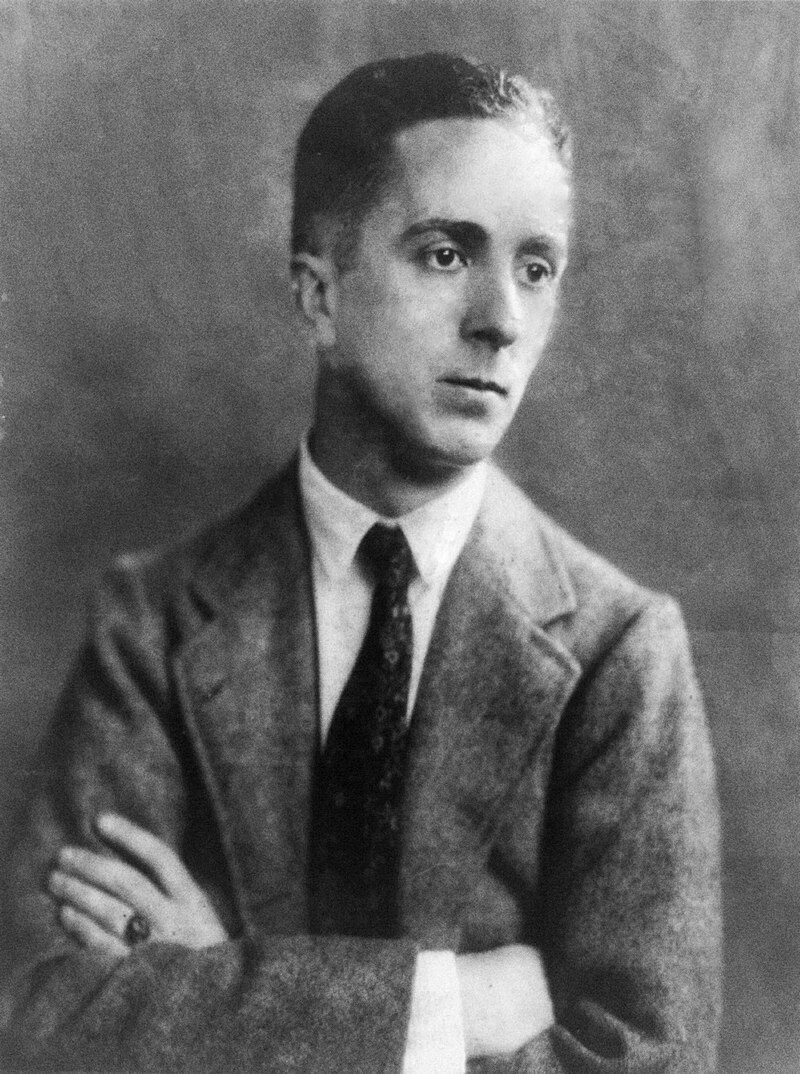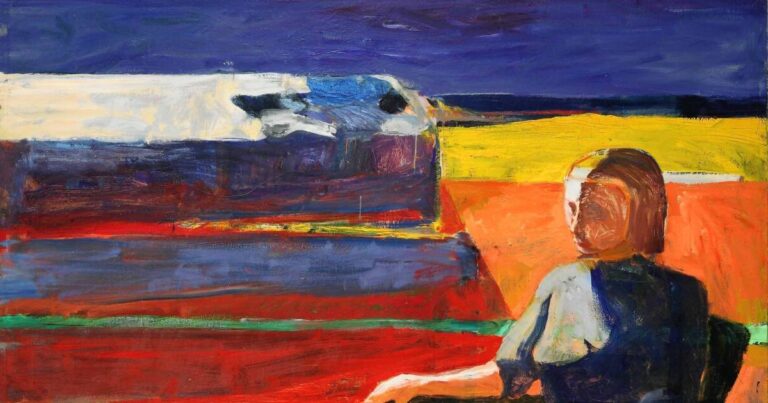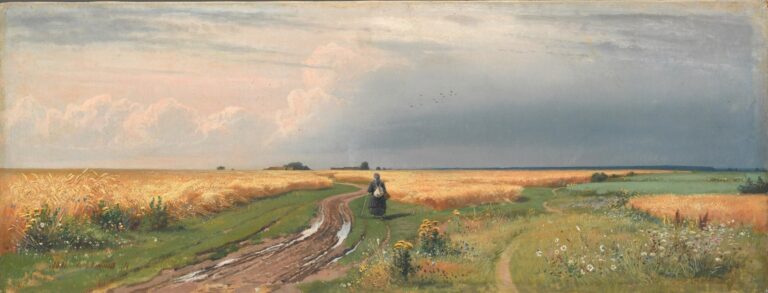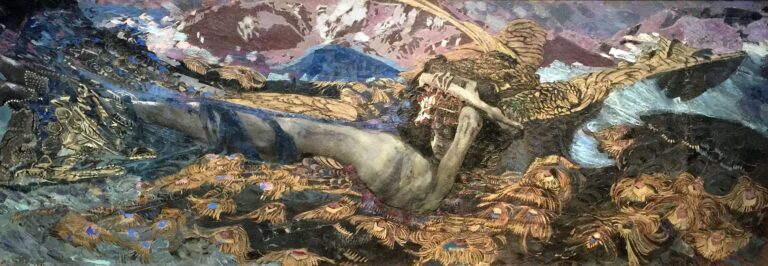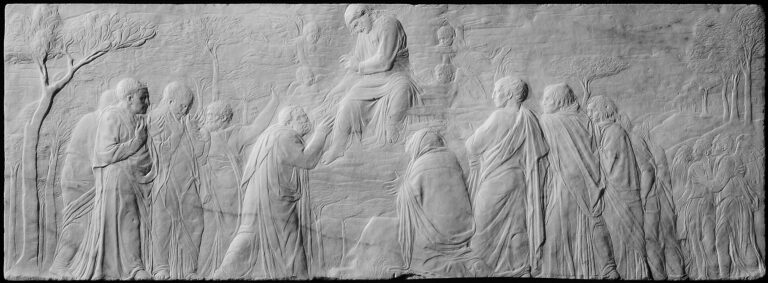Norman Rockwell Painter: A Masterful Chronicler of American Life
Born: February 3, 1894, New York City, U.S.
Death: November 8, 1978, Massachusetts, U.S.
Art Movement: Regionalism
Nationality: American
Teachers: Thomas Fogarty, George Bridgman, and Frank Vincent DuMond
Institution: Parsons School of Design, National Academy of Design, and Art Students League
Norman Rockwell Painter: A Masterful Chronicler of American Life
Life and Career of Norman Rockwell
Norman Rockwell established himself as one of America’s most beloved artists. His detailed illustrations of everyday American life made him famous. His career spanned nearly seven decades, during which he created over 4,000 original works.
Early Years and Education
Norman Rockwell was born on February 3, 1894, in New York City. From an early age, he showed remarkable artistic talent and knew he wanted to be an illustrator.
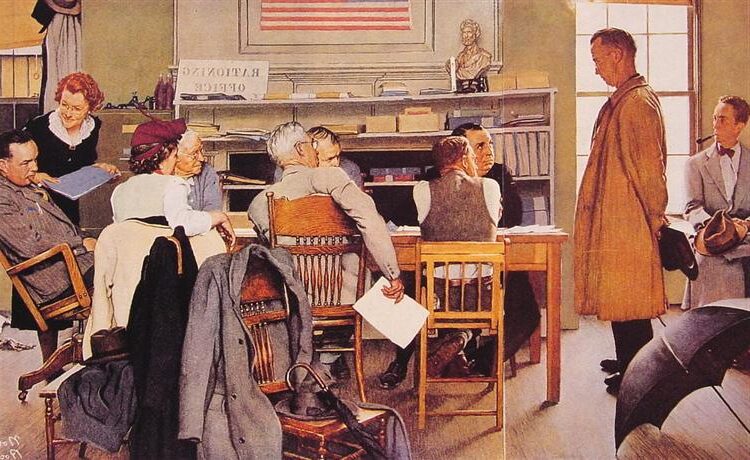
Visits a Ration Board (1944) by Norman Rockwell
At 14, Rockwell enrolled in the New York School of Art. He later transferred to the National Academy of Design. Finally, he studied at the Art Students League under Thomas Fogarty and George Bridgman.
His formal education ended at 16 when he left school to work as an artist. Rockwell’s first professional job came as a staff artist for “Boys’ Life,” the official magazine of the Boy Scouts of America.
These early experiences helped Rockwell develop his distinctive style. His style focused on meticulous detail and storytelling through art.
Professional Breakthrough
Rockwell’s career took a significant turn when he moved to New Rochelle, New York, in 1915. There, he set up a studio with cartoonist Clyde Forsythe near successful illustrators like J.C. Leyendecker.
At just 22 years old, Rockwell painted his first cover for The Saturday Evening Post in 1916. The illustration, titled “Boy with Baby Carriage,” marked the beginning of a remarkable partnership.
During World War I, Rockwell attempted to enlist in the Navy but was initially rejected for being underweight. He eventually served as a military artist, creating illustrations for military publications.
By the early 1920s, Rockwell had established himself as a rising star in American illustration. His attention to detail and ability to capture authentic American moments resonated with the public.
Saturday Evening Post Era
Rockwell’s relationship with The Saturday Evening Post lasted 47 years, from 1916 to 1963. During this time, he created 323 original covers for the magazine.
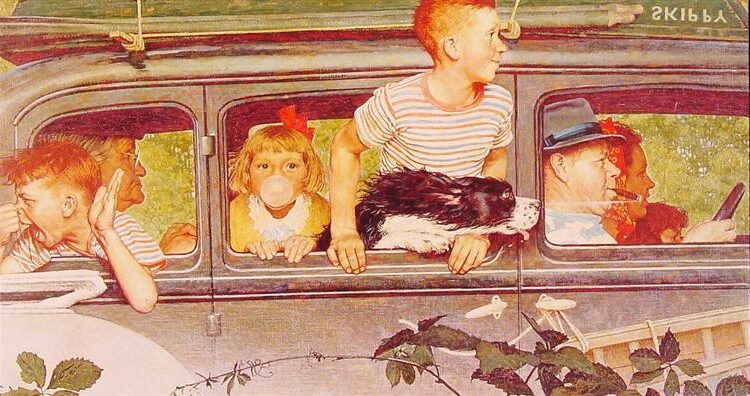
Going and Coming (1947) by Norman Rockwell
His illustrations became cultural touchstones, depicting idealized versions of American life. Rockwell’s work featured everyday scenes: family gatherings, children at play, and community events.
In the 1940s, Rockwell created his famous “Four Freedoms” series inspired by President Franklin D. Roosevelt’s speech. These paintings—Freedom of Speech, Freedom of Worship, Freedom from Want, and Freedom from Fear—became iconic.
Rockwell’s method was meticulous. He used photographs of live models and real settings to create authentic scenes. Each illustration required extensive planning, multiple sketches, and careful execution.
Later Years and Legacy
In 1963, Rockwell ended his relationship with The Saturday Evening Post and began working for Look magazine. This period marked a shift toward more socially conscious subjects.
His 1964 painting “The Problem We All Live With,” depicting Ruby Bridges being escorted to school during desegregation, showed Rockwell addressing civil rights issues directly.
Rockwell established a trust in 1973, placing his works in the custody of the Norman Rockwell Museum in Stockbridge, Massachusetts. This preserved his artistic legacy for future generations.
He died on November 8, 1978, at age 84, leaving behind an unparalleled collection of American illustrations.
Today, Rockwell’s work continues to influence American art and culture. His paintings serve as historical documents of 20th-century American life and values.
Artistic Style and Influences
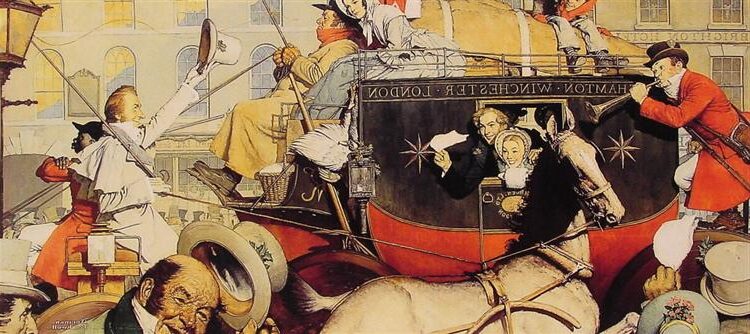
Winchester Stagecoach (c. 1941) by Norman Rockwell
Norman Rockwell developed a distinctive artistic approach that captured everyday American life with remarkable detail and storytelling ability. His technical mastery combined with his keen observation of human nature created paintings that resonated deeply with audiences throughout the 20th century.
Technique and Composition
Rockwell employed a meticulous process for creating his iconic illustrations. He began with detailed pencil sketches, followed by elaborate photographic sessions with carefully selected models. These photographs served as references for his final oil paintings.
His compositions often featured complex arrangements with multiple figures that guided the viewer’s eye through a narrative. Rockwell paid extraordinary attention to detail, from the wrinkles in clothing to subtle facial expressions that conveyed emotion.
Key Technical Elements:
- Photorealistic rendering
- Strong narrative focus
- Precise arrangement of subjects
- Dramatic use of lighting to highlight focal points
- Vibrant color palette
Rockwell’s brushwork was smooth and controlled, creating a polished finish that became his trademark. This technical precision allowed him to convey complex stories through single images.
Inspirations and Contemporaries
Rockwell drew inspiration from earlier American artists like Howard Pyle and J.C. Leyendecker. Their influence shaped his narrative approach and technical methods. He greatly admired European masters, particularly Rembrandt’s use of light and shadow.
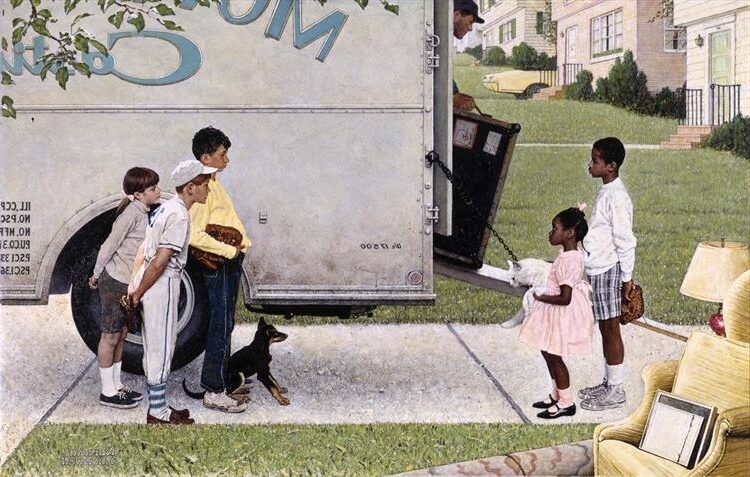
New Kids in the Neighborhood (1967) by Norman Rockwell
Despite working primarily as an illustrator, Rockwell maintained connections with fine artists of his era. His contemporaries included N.C. Wyeth and Maxfield Parrish, though Rockwell’s style remained distinct.
His artistic vision was also shaped by:
- American folk traditions
- Small-town social dynamics
- Popular culture of his time
- Film techniques and framing
Rockwell’s work evolved alongside changing American values. His later paintings addressed civil rights and poverty, demonstrating his artistic growth beyond the cheerful scenes that first made him famous.
Cultural Impact
Rockwell’s artistic style became synonymous with a particular American aesthetic. His paintings for The Saturday Evening Post defined how many Americans viewed themselves and their national identity.
His ability to depict common experiences with warmth and authenticity created an immediate connection with viewers. People recognized themselves and their neighbors in his carefully crafted scenes.
Rockwell’s influence extends to modern illustrators and filmmakers. Directors like Steven Spielberg and George Lucas have cited his visual storytelling as inspiration for their cinematic techniques.
The technical skill and emotional depth in Rockwell’s paintings elevated illustration to an art form deserving serious consideration. Art historians now recognize his significant contributions to American visual culture, beyond his commercial success.
Notable Works
Norman Rockwell created hundreds of paintings throughout his career, capturing American life with remarkable detail and storytelling ability. His most celebrated pieces combine technical skill with emotional depth, making them instantly recognizable to generations of Americans.
Freedom Series
The “Four Freedoms” series stands as Rockwell’s most influential work. Inspired by President Franklin D. Roosevelt’s 1941 State of the Union address, these paintings illustrate the four essential human freedoms: Freedom of Speech, Freedom of Worship, Freedom from Want, and Freedom from Fear.

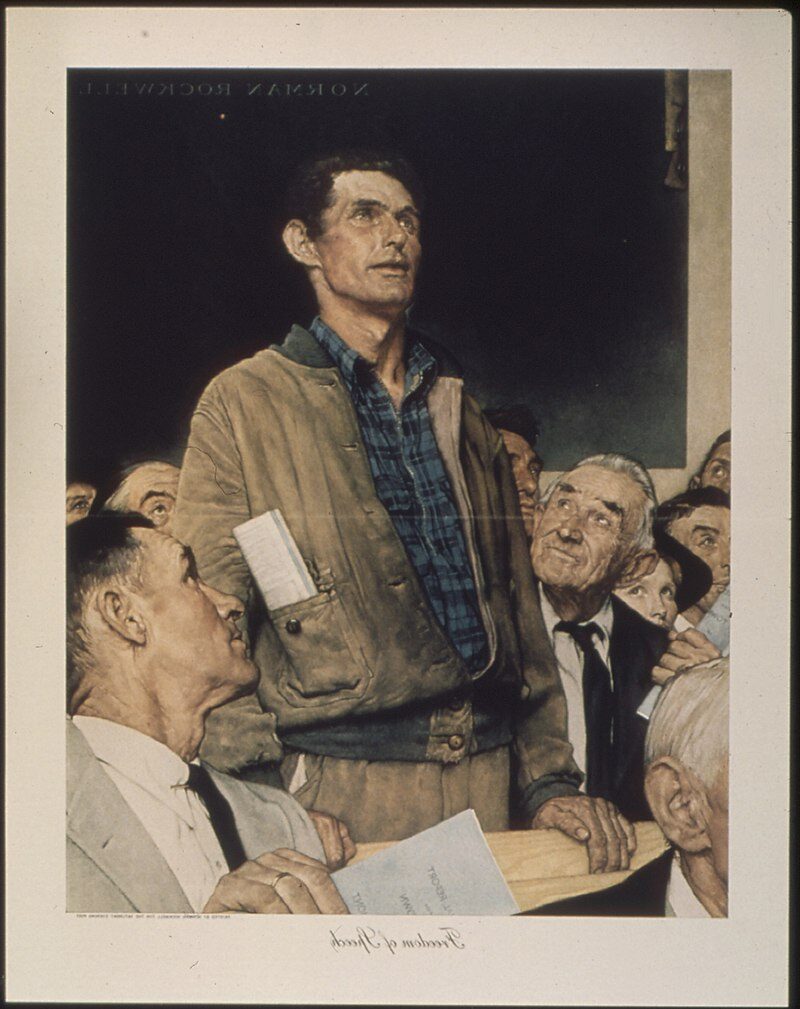
“Freedom from Want,” depicting a family gathered around a Thanksgiving table, became an iconic representation of American family life. The government used these paintings in a war bond drive that raised over $130 million for the war effort.
Rockwell spent six months creating these paintings in 1942, working tirelessly to translate abstract concepts into relatable human scenes. The original works toured the country to massive crowds before finding their permanent home at the Norman Rockwell Museum.
Portraits and Depictions
Rockwell’s portrait work showcased his ability to capture personality through careful observation. His 1960 portrait of John F. Kennedy remains one of the most recognized presidential images in American art.

The Problem We All Live With (1964) by Norman Rockwell
“The Problem We All Live With” (1964) depicts six-year-old Ruby Bridges being escorted to school during desegregation. This powerful image marked Rockwell’s shift toward addressing civil rights issues. The painting hung in the White House during the Obama administration.
Rockwell also painted Rosie the Riveter for The Saturday Evening Post in 1943, creating a muscular, confident woman taking a lunch break from her factory job. His version differed from the “We Can Do It!” poster but equally celebrated women’s contributions during World War II.
Lesser-Known Works
Beyond his famous Post covers, Rockwell created numerous works that deserve attention. His “Willie Gillis” series followed a fictional soldier through various wartime situations, giving Americans a relatable character during World War II.
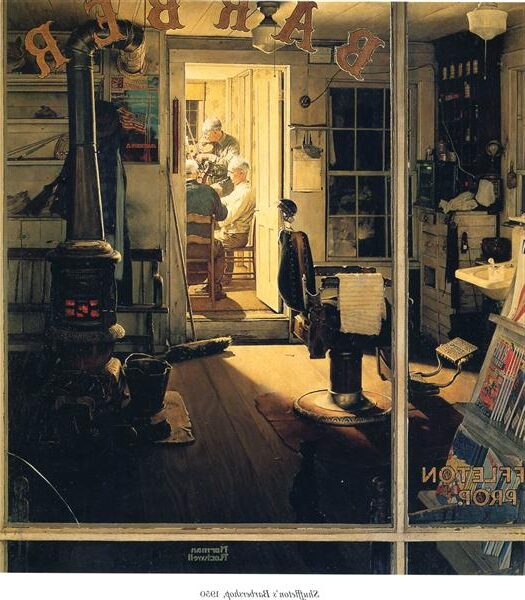
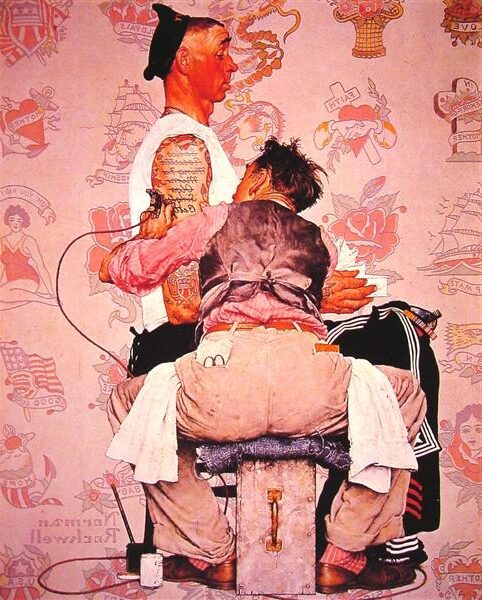
Rockwell illustrated all four editions of the Boy Scout handbook between 1925 and 1964. These detailed illustrations shaped how generations of young men visualized outdoor skills and Scout values.
“Shuffleton’s Barbershop” (1950) demonstrates Rockwell’s masterful use of light. The painting shows musicians practicing after hours, viewed through a barbershop window. Art critics consider this one of his most sophisticated compositions in terms of technique and storytelling.
His Christmas-themed works beyond the famous “Santa” paintings include touching scenes of family traditions that continue to appear on holiday cards today.
Frequently Asked Questions
Norman Rockwell’s paintings and illustrations continue to spark interest and curiosity among art enthusiasts and historians alike. His detailed portrayals of American life have left many wondering about his techniques, influences, and lasting impact on American culture.
What are some of the most iconic paintings by Norman Rockwell?
“The Four Freedoms” series stands as perhaps Rockwell’s most recognized work. Inspired by President Franklin D. Roosevelt’s speech, these four paintings—Freedom of Speech, Freedom of Worship, Freedom from Want, and Freedom from Fear—captured America’s core values during World War II.
“Triple Self-Portrait” shows Rockwell painting himself while looking in a mirror, revealing his humor and self-awareness. This 1960 work has become a symbol of artistic self-reflection.
“Rosie the Riveter,” painted in 1943, celebrated women’s contributions to the war effort. Though different from the more famous “We Can Do It!” poster, Rockwell’s Rosie became a powerful symbol of female strength.
“The Problem We All Live With” from 1964 depicts six-year-old Ruby Bridges being escorted to school during desegregation. This marked Rockwell’s shift toward addressing social issues in his later career.
How did American culture influence the work of Norman Rockwell?
Small-town America shaped Rockwell’s artistic vision profoundly. Growing up in New York but later living in rural communities, he developed a keen eye for the details of everyday American life.
World War II influenced many of Rockwell’s most powerful works. The conflict’s impact on American families, values, and national identity appeared throughout his illustrations during this period.
Changes in American society after the 1950s led Rockwell to address civil rights and poverty. This shift reflected the nation’s evolving consciousness about social issues.
Holiday traditions frequently appeared in his paintings, with Thanksgiving and Christmas scenes becoming yearly traditions in publications like The Saturday Evening Post.
Can you describe Norman Rockwell’s technique and style in his paintings?
Rockwell worked with remarkable attention to detail. He often used photographs as references, meticulously arranging models and props before beginning his paintings.
His color palette tended toward warm, natural tones that created a sense of nostalgia and comfort. Even in more serious works, his technical approach maintained this distinctive warmth.
Facial expressions received special attention in Rockwell’s work. He excelled at capturing subtle emotions that told complete stories within a single frame.
Rockwell typically painted in oils, working on carefully prepared surfaces. His process was methodical, involving numerous preliminary sketches before the final illustration.
In what ways did Norman Rockwell’s illustrations contribute to popular magazines during his time?
The Saturday Evening Post featured 323 Rockwell covers over 47 years. These illustrations became so popular that circulation often increased with each new Rockwell cover.
Rockwell’s illustrations helped magazines connect with middle-class Americans. His relatable scenes of everyday life resonated with readers who saw their own experiences reflected in his art.
Holiday-themed covers became particularly anticipated events. His Thanksgiving and Christmas illustrations helped define how Americans visualized these celebrations.
Magazine editors valued Rockwell’s ability to capture cultural moments with both humor and sincerity. His illustrations could address current events while maintaining broad appeal.
What role did Norman Rockwell play in the portrayal of American society in the 20th century?
Rockwell created an idealized vision of American life that many embraced. His paintings often emphasized community values, hard work, and family bonds.
Critics have debated whether his early work glossed over social problems. Some argue his focus on small-town charm avoided addressing poverty, racism, and other issues.
Later in his career, Rockwell directly addressed civil rights issues. Works like “The Problem We All Live With” and “Southern Justice” showed his evolving perspective on American society.
His wartime illustrations helped unite Americans around shared values. Images like “Rosie the Riveter” and “The Four Freedoms” bolstered morale and purpose during challenging times.
How has Norman Rockwell’s legacy been preserved in modern art history?
The Norman Rockwell Museum in Stockbridge, Massachusetts houses the world’s largest collection of his original works. The museum preserves his studio. It also continues to educate visitors about his techniques.
Art historians have reassessed Rockwell’s place in American art. Once dismissed as merely an illustrator, he is increasingly recognized as an important chronicler of American life.
Rockwell’s influence appears in contemporary popular culture. Filmmakers like Steven Spielberg and George Lucas have cited his narrative approach as inspiration for their visual storytelling.
Exhibitions of his work continue to draw large crowds. Major retrospectives at institutions like the Smithsonian American Art Museum have introduced new generations to his distinctive vision of America.


